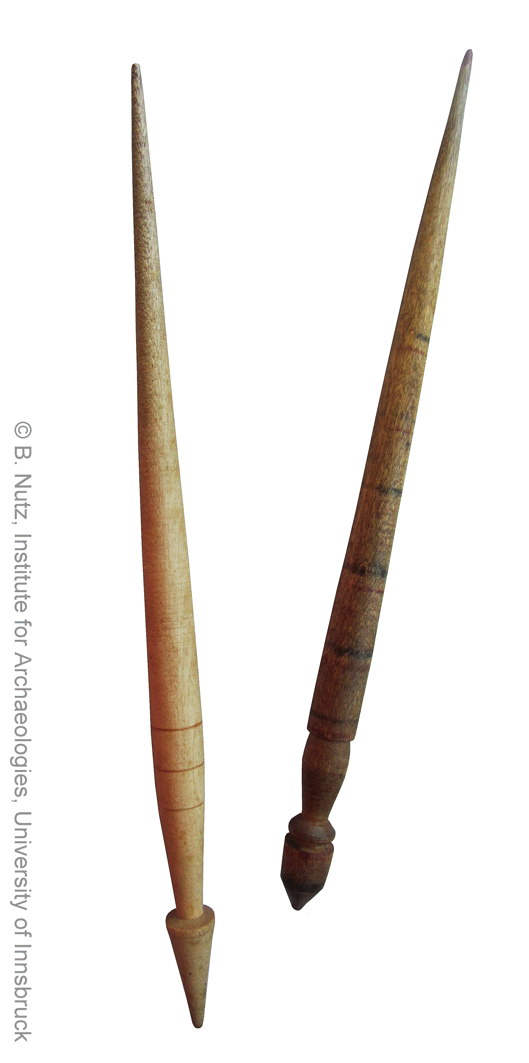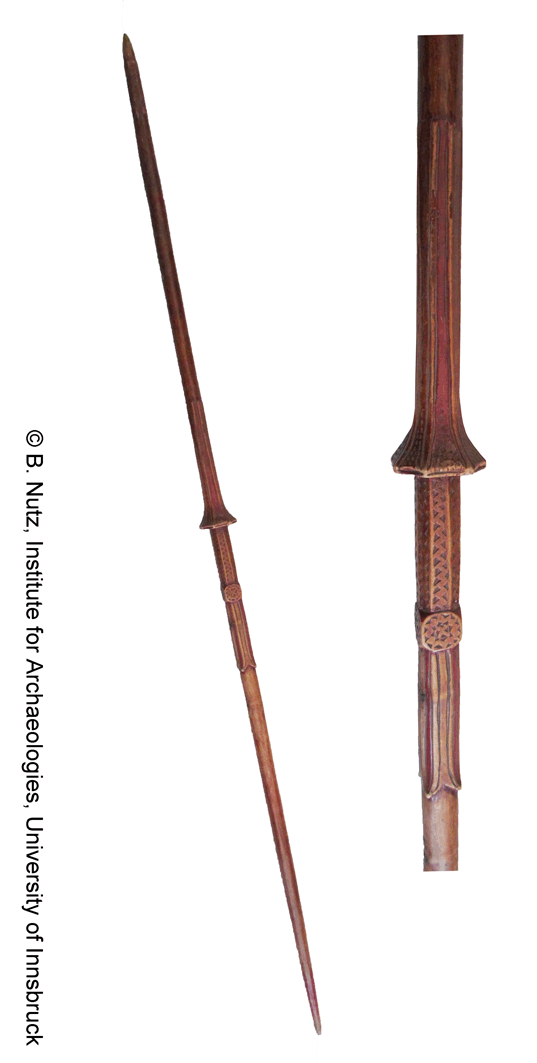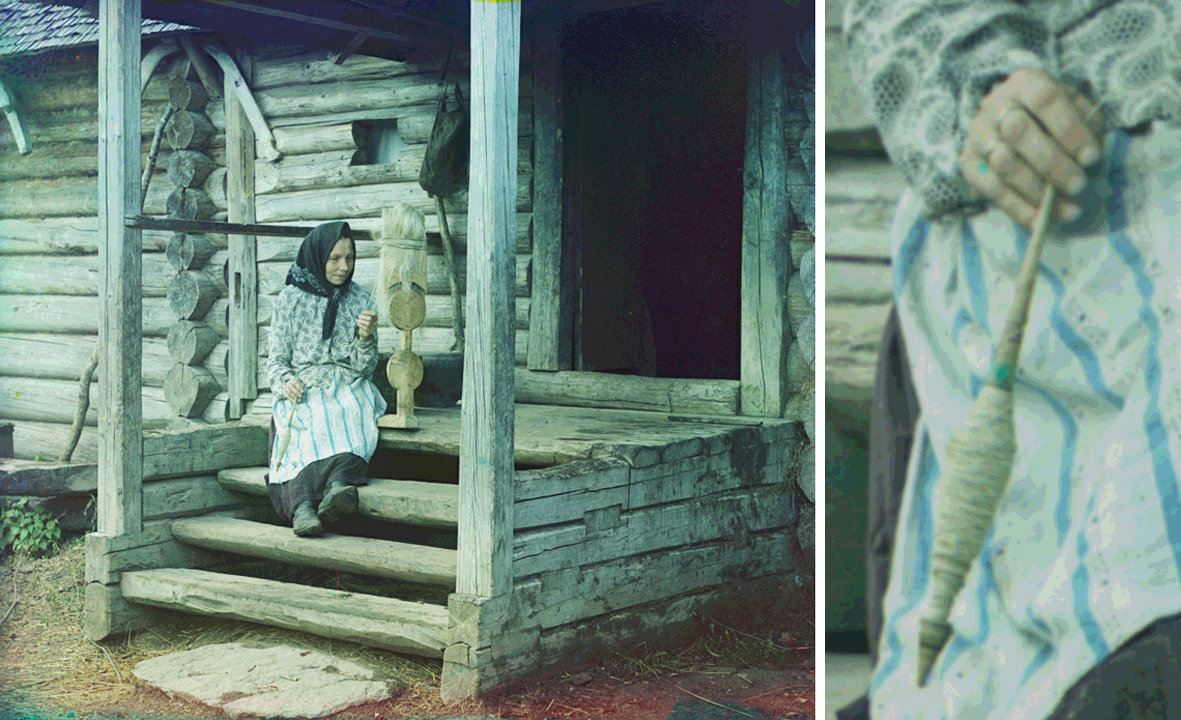Projects and Science
Russia
Europe/Asia
ABT
A traditional Russian distaff is L-shaped and consists of two elements: the lopastka or blade, a vertical panel with wide flat top to which the bundle of flax or wool, called kudel is fixed, and the dontse, or base, a horizontal oar-shaped board on which the spinner sits and stabilizes the structure with the weight of her body. Sometimes the distaff is carved from a single piece of wood - a tree stump with a root protruding at a right angle. In some areas of Russia the upper part of the blade has the shape of a comb, and the kudel was mounted on the teeth.
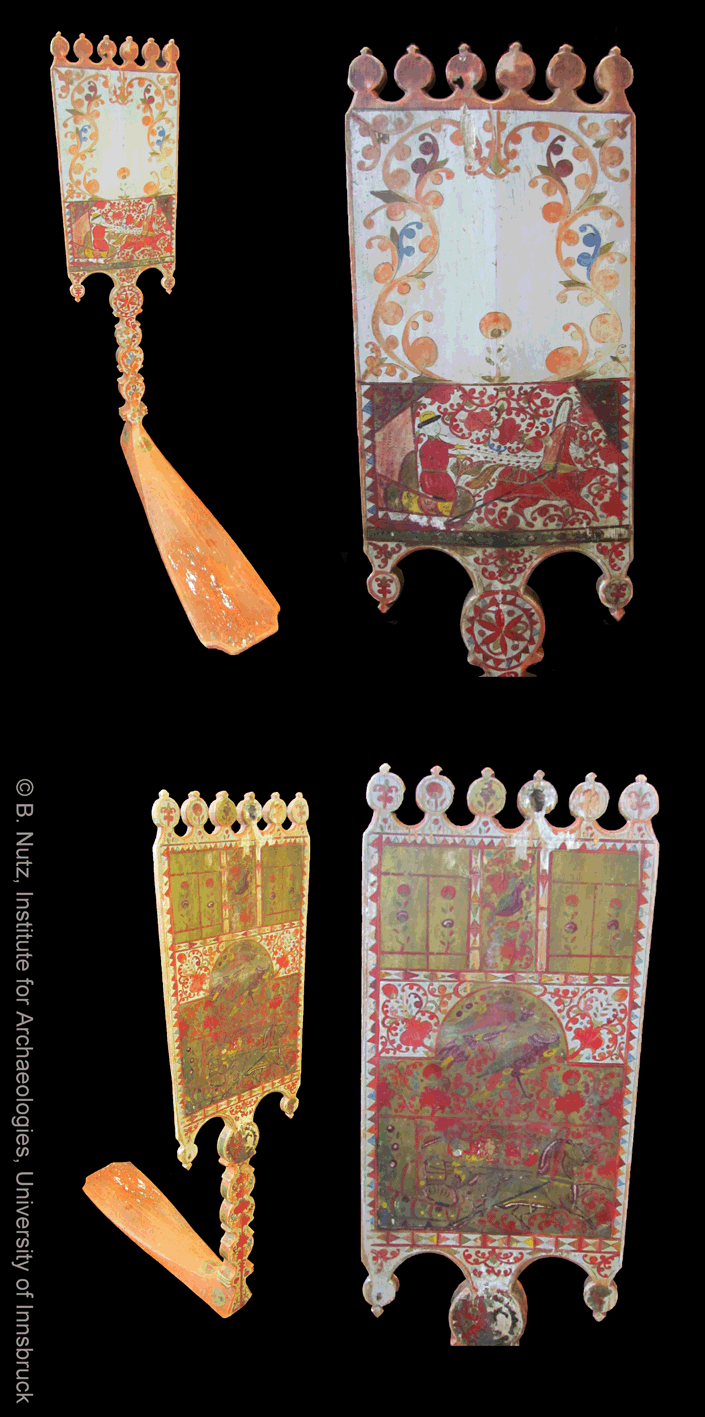
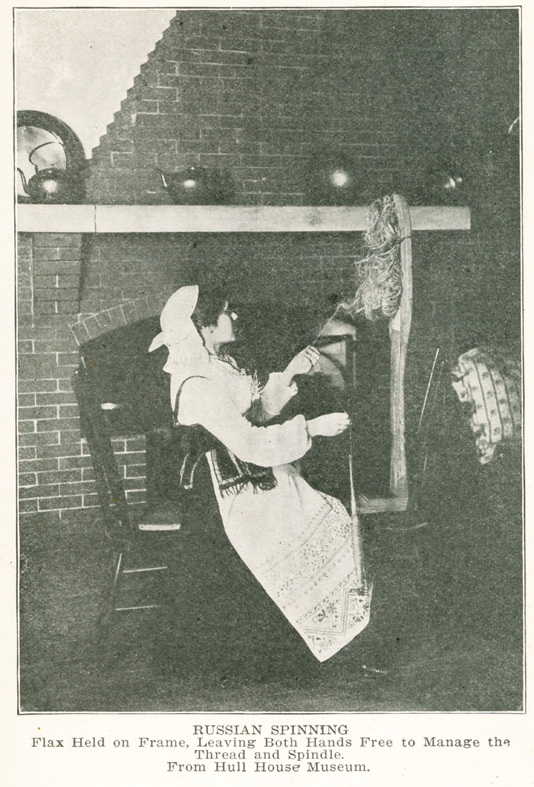
Russian woman spinning.
From: Kate Heintz Watson, Textiles and Clothing. The Library of Home Economics 10 (Chicago 1907) (17.06.2016)
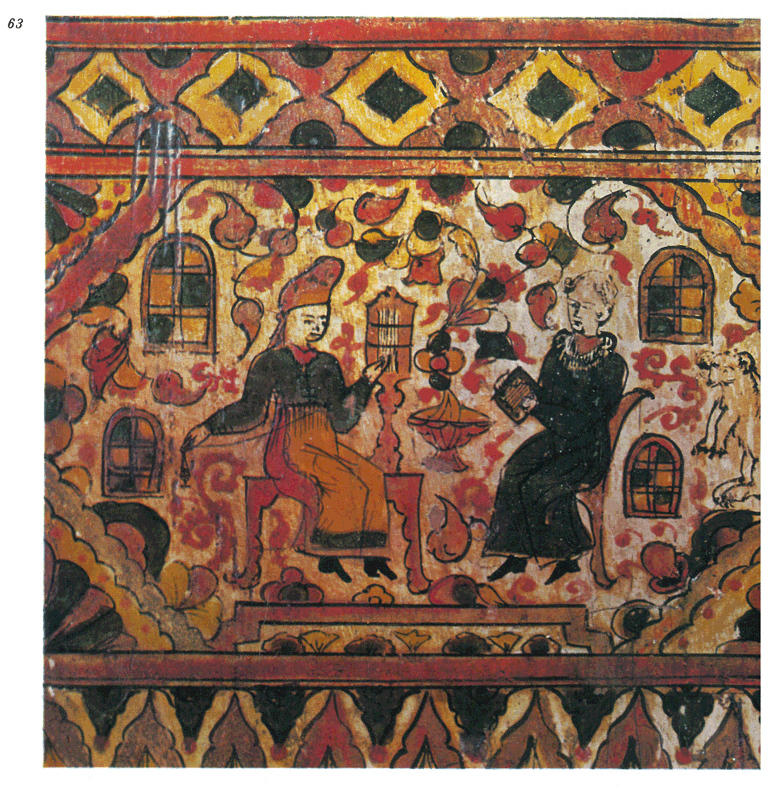
From: Natalija V. Taranovskaya, Nikandr V. Maltsev, РУССКИЕ ПРЯЛКИ / Russian Distaffs (Leningrad 1970).
